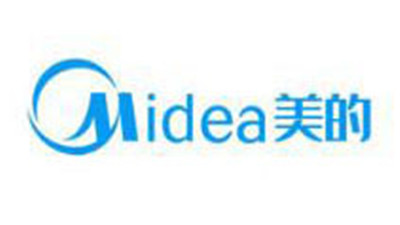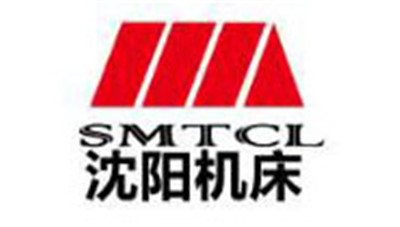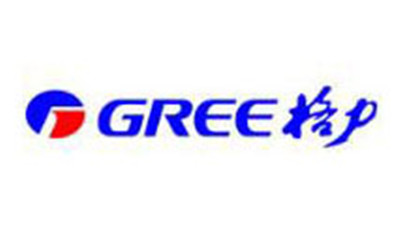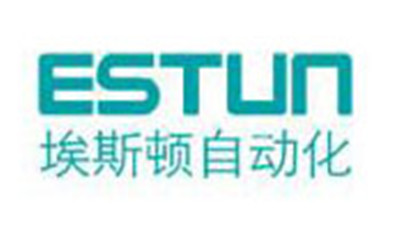7 Best 2-Wire Electronic Flat Layer Inductors Revolutionizing Elevator Parts
Table of Contents
- Understanding the Basics of 2-Wire Electronic Flat Layer Inductors
- Key Features That Make These Inductors Ideal for Elevator Applications
- Top 7 Innovative 2-Wire Inductors Leading the Industry Forward
- Installation Tips for Seamless Integration of Flat Layer Inductors
- Comparative Analysis: 2-Wire Inductors vs Traditional Inductor Designs
- Future Trends in Elevator Parts: The Role of Advanced Inductor Technologies
- Maximizing Efficiency with the Encapsulated Transformer XP392-003: Insights from the 2023 Power Distribution Market Report
- FAQS
- Conclusion
- Related Posts
You know, in the fast-changing world of elevator tech, getting things precise and efficient is more important than ever. That’s why innovations like the new '2-Wire Electronic Flat Layer Inductor for Elevator Parts' are really gaining traction. I came across a recent report from Research and Markets that estimates the global market for elevator components will hit around $20 billion by 2025. This boom is mainly thanks to improvements in electronic parts that make elevators more reliable and perform better. Take Dezhou Xinping Electronics Co., Ltd., for example — they've been around since March 2001 and are really leading the way in making high-quality electronic transformers. Their goal? To incorporate these advanced 2-wire electronic flat layer inductors into elevator systems, which could really change how we think about safety and efficiency in vertical transportation. It’s pretty exciting to see how they’re setting new standards in such a competitive industry!

Understanding the Basics of 2-Wire Electronic Flat Layer Inductors
Lately, 2-wire electronic flat layer inductors are really starting to catch on in different tech applications, especially in elevator systems. People are loving how compact and efficient they are. If you get a chance to understand the basics of these inductors, you'll see why they’re such a big deal in modern engineering. Unlike the older, bulkier types, these flat layer inductors have a sleek, flat shape and simpler connections—which not only saves space but also cuts down on unwanted parasitic inductance that you’d find in traditional designs.
One of the coolest things about these 2-wire flat layer inductors is how efficient and reliable they are when it comes to managing power. They’re pretty much built tough to handle the harsh conditions you see in elevator systems. Their flat shape isn’t just for looks—it actually helps with heat dissipation, so they can run smoothly even if things get pretty hot. Plus, the way they’re made—using smart materials and layered in a specific way—boosts their inductive performance. All in all, they’re a key part of making elevators run safely and smoothly, especially when quick responses and low electromagnetic interference are a must.
Key Features That Make These Inductors Ideal for Elevator Applications
In the fast-changing world of elevator tech, 2-wire electronic flat layer inductors are really making waves. Their small, streamlined design and solid performance make them perfect for elevators—where space is tight and everything has to work reliably. These inductors help cut down on electromagnetic interference, which is super important for the sensitive electronics that control elevator functions. No one wants glitches, right?

One thing that really stands out about these inductors is their ability to handle high currents without wasting too much energy. That means elevators can run more efficiently, saving power in the long run. Plus, their improved thermal management keeps them behaving smoothly, even when the load’s heavy. Companies like Dezhou Xinping Electronics Co., Ltd.—who’ve been making precision electronic transformers since 2001—find that producing these advanced inductors fits perfectly with what the elevator industry needs: trustworthy, high-quality parts.
Pro tip: When you're picking inductors for elevator systems, it’s smart to go for ones with good thermal management—that way, they’ll last longer and stay reliable even during those busy peak times. And don’t forget, choosing inductors with top-notch electromagnetic compatibility can really help reduce signal issues, making the whole system run even smoother.
Top 7 Innovative 2-Wire Inductors Leading the Industry Forward
You know, the elevator industry is going through quite a big makeover lately, all thanks to these new 2-wire electronic flat layer inductors. Honestly, they’re doing a lot to boost elevator performance—making everything more efficient, reliable, and safer. As manufacturers are always on the hunt for the latest tech, adding these inductors is really helping push things forward and modernize elevator systems.
One thing I really like about these 2-wire inductors is how sleek their design is. They take up less space and are way easier to install than the older, bulkier ones. That means they can help cut down costs during production and speed up the whole setup process when you're upgrading or building elevators. If you're thinking about choosing a 2-wire inductor for your elevator, just keep a few things in mind—make sure it works well with your existing parts, and check its impedance specs so everything runs smoothly.
And here’s the best part: maintenance is a whole lot simpler with these guys. They’re tough and efficient, so they tend to break down less often, which means less downtime and fewer repair bills. It’s a good idea to do regular checks to keep them in top shape. Also, stay in the loop with the latest industry news—tech keeps evolving, and staying updated helps you get the most out of these innovative inductors in your elevator setup.
7 Best 2-Wire Electronic Flat Layer Inductors Revolutionizing Elevator Parts
This chart illustrates the efficiency percentages of the top 7 innovative 2-wire electronic flat layer inductors that are transforming the elevator industry. Each inductor type is evaluated based on its efficiency, showcasing the advancements made in the sector.
Installation Tips for Seamless Integration of Flat Layer Inductors
When you're adding flat layer inductors into elevator systems, making sure everything’s installed smoothly is super important for the system to run at its best. First off, double-check that all your parts match up with the existing setup—getting the specs right from the start can save you a lot of headaches later on. Also, take your time to measure the space available; these inductors are usually designed for tighter spots, so precise measurements with good tools are a must.
Then there’s the wiring. Use good-quality connectors that can handle the electrical load without overheating—that’s a small detail that can make a big difference. Pay close attention to how the inductors are oriented; placing them the wrong way can mess with the magnetic fields and reduce efficiency. After you’ve installed everything, it’s worth doing a quick inspection to catch any issues early. Regular check-ups down the line will help keep things running smoothly and extend the lifespan of the system. Follow these tips, and you’ll ensure your elevator runs seamlessly and gets the most out of those cool new inductors.
Comparative Analysis: 2-Wire Inductors vs Traditional Inductor Designs
For ages, traditional inductors have been the go-to choice for elevator systems—they're known for being pretty reliable and steady. That said, they usually come with multiple windings, which can make installation a bit of a hassle and take up more space inside the elevator’s control gear.
Now, on the flip side, there's this new kid on the block: 2-wire electronic flat layer inductors. They shake things up by using just a simple two-wire setup. That means installing them is way easier, and they help make the whole system more efficient while taking up less room overall.
When you compare these 2-wire inductors to the old-school designs, the advantages are pretty clear. The flat layer design cuts down on electromagnetic interference, so signals stay cleaner and power losses drop. Plus, they’re more budget-friendly—since they’re smaller and easier to fit into existing elevator setups, there’s no need for big, costly redesigns. With lower manufacturing costs and better performance, it’s no wonder that more and more elevator makers are jumping on the bandwagon and choosing these new inductors. They’re basically setting a new standard for the industry, and honestly, it’s an exciting shift.
Future Trends in Elevator Parts: The Role of Advanced Inductor Technologies
You know, when we look at the future of elevator parts, it’s pretty clear that advancements in inductor tech—especially these new 2-wire electronic flat layer inductors—are making a big splash. The global inductor market is actually expected to grow all the way up to $10.2 billion by 2035, which shows there’s a huge demand for smaller, more efficient components in pretty much every industry, elevators included. These advanced inductors really help improve power management, so elevators can run smoother, faster, and use less energy—that’s a win-win situation.
And, on top of that, the way we’re manufacturing these parts is changing too, thanks to Industry 4.0. Think connectivity, real-time data, and smart analytics—these things are totally transforming how elevator parts are made. It’s all about making systems smarter and more connected, which not only boosts efficiency but also aligns with global efforts to go green. So, as everything evolves, it’s pretty clear that these cutting-edge inductor technologies are going to be a big deal—shaping elevator designs that are not just high-performing but also kinder to the planet.

Maximizing Efficiency with the Encapsulated Transformer XP392-003: Insights from the 2023 Power Distribution Market Report
In recent years, the demand for efficient power distribution solutions has surged, particularly in the context of evolving industry standards and environmental considerations. The Encapsulated Transformer XP392-003 stands out as a prime choice for businesses looking to maximize efficiency and reliability. This American standard transformer is crafted using an automated production process that ensures high-quality components, from its robust shell to the durable potting material. Such consistency is essential for diverse applications, making the XP392-003 suitable for a wide array of electrical products and operating environments.
Not only does the XP392-003 meet stringent export environmental protection requirements, but its strategic positioning near Qingdao and Tianjin Ports also facilitates rapid delivery. This is a significant advantage for businesses that value timely procurement in their supply chains. Furthermore, our commitment to customization, from shell colors to potting materials, allows clients to tailor the transformer to their specific needs, fostering adaptability in an increasingly dynamic market.
In addition to its impressive specifications, we offer potential clients the opportunity to request free samples of the XP392-003. This hands-on trial allows businesses to evaluate the product’s performance firsthand before making a commitment. Our professional technical engineers are also on standby to assist with any custom design requirements, ensuring that your specific needs are met with precision and efficiency. Don’t miss out on the chance to explore the potential of the XP392-003 transformer; contact us today to learn more!
FAQS
: 2-wire electronic flat layer inductors are compact inductors designed with a flat geometry and a simplified two-wire connection, which reduces the physical space required and minimizes parasitic inductance compared to traditional inductors.
They provide high efficiency and reliability in power management, better thermal management, and are engineered to withstand demanding conditions, ensuring smooth operation and rapid response times in elevators.
Their design minimizes electromagnetic interference, improving signal integrity and reducing potential disruptions in electronic systems essential for precise control in elevator components.
This feature allows elevators to operate more efficiently and results in energy savings over time, while maintaining consistent performance under heavy loads.
2-wire inductors simplify installation with a two-wire configuration, reduce the overall footprint needed for installation, and provide improved performance metrics while being more cost-effective.
It's important to prioritize inductors with robust thermal management and superior electromagnetic compatibility to ensure longevity, reliability, and to enhance overall system performance.
Conclusion
So, I recently came across this blog titled "7 Best 2-Wire Electronic Flat Layer Inductors That Are Changing the Game in Elevator Parts," and honestly, it’s pretty fascinating. It kicks off by breaking down how these 2-wire electronic flat layer inductors work and points out what makes them stand out—especially for elevator applications. Then, it walks through a handpicked list of the top seven coolest 2-wire inductors out there, highlighting just how important they are for pushing the industry forward.
On top of that, the article offers some handy tips on how to install these flat layer inductors smoothly, and there’s even a comparison between these modern 2-wire versions and the older, traditional designs. Towards the end, it’s all about looking ahead—discussing future trends and how cutting-edge inductor tech will shape the evolution of elevator parts. Plus, as a leading high-tech company from Dezhou, Xinping Electronics is right there at the forefront, crafting precision electronic components—including these very 2-wire electronic flat layer inductors for elevators.
All in all, it’s a great read if you’re into how new tech is transforming the elevator industry!
Related Posts
-

The Future of Efficient Power Solutions with 30 Kva Transformers
-

Understanding Problems Associated with Earthing Transformers in Power Systems
-

Ultimate Guide to Mastering Lead Transformers for Business Growth
-

Ultimate Checklist for Selecting the Best Air Core Inductor for Your Projects
-

How to Choose the Right Constant Voltage Transformer for Your Industrial Application
-

How to Choose the Right Substation Transformer for Your Energy Needs Based on Load Calculation


















